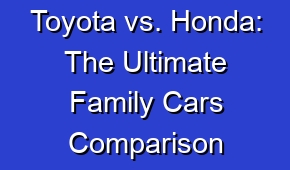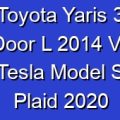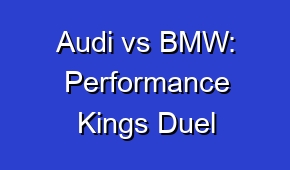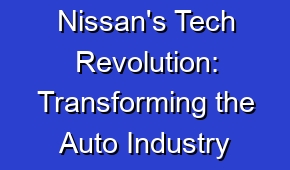Mercedes Benz S550 Sedan 2014 Vs Tesla Model S 2020

Compare the Mercedes Benz S550 Sedan 2014 with the Tesla Model S 2020 to find out which luxury car offers the best features, performance, and value for money.
| Feature | Mercedes Benz S550 Sedan 2014 | Tesla Model S 2020 |
|---|---|---|
| Engine | 4.7L V8 | Electric |
| Horsepower | 449 HP | 762 HP |
| Acceleration (0-60 mph) | 4.8 seconds | 2.3 seconds |
| Range | N/A | 390+ miles |
| Transmission | 7-speed automatic | Single-speed direct drive |
| Drive Type | Rear-wheel drive | All-wheel drive |
| Seating Capacity | 5 | 5-7 |
| Infotainment System | COMAND system | Tesla Infotainment System |
| Navigation | Yes | Yes |
| Autopilot | No | Yes |
| Safety Features | Airbags, ABS, Stability Control | Tesla Autopilot, Enhanced Autopilot, Safety Assist |
| Interior Material | Leather upholstery, wood trim | Premium synthetic leather, wood trim |
| Sunroof | Yes | Panoramic glass roof |
| Dimensions | Length: 206.5 in, Width: 74.8 in, Height: 58.7 in | Length: 196 in, Width: 77.3 in, Height: 56.9 in |
| Cargo Space | 16.4 cu ft | 28.4 cu ft |
| Charging Time | N/A | Approx. 10-11 hours (240V), Approx. 1 hour (Supercharger) |
Engine
The Mercedes Benz S550 Sedan 2014 is equipped with a 4.7L V8 engine, while the Tesla Model S 2020 is powered by an electric motor.
Horsepower
The S550 Sedan offers 449 horsepower, whereas the Model S boasts an impressive 762 horsepower, providing a more exhilarating driving experience.
Acceleration (0-60 mph)
The S550 Sedan takes 4.8 seconds to accelerate from 0 to 60 mph, while the Model S achieves this feat in just 2.3 seconds, making it significantly faster.
Range
The range of the S550 Sedan is not specified, whereas the Model S offers a range of 390+ miles, providing ample driving distance on a single charge.
Transmission
The S550 Sedan features a 7-speed automatic transmission, while the Model S utilizes a single-speed direct drive transmission, contributing to its smooth and efficient performance.
Drive Type
The S550 Sedan has rear-wheel drive, whereas the Model S comes with all-wheel drive, enhancing its traction and handling capabilities in various road conditions.
Seating Capacity
Both vehicles can accommodate up to five passengers, although the Model S offers the option for additional seating, accommodating up to seven individuals.
Infotainment System
The S550 Sedan features the COMAND system, while the Model S is equipped with the Tesla Infotainment System, providing advanced connectivity and entertainment features.
Both vehicles come with navigation systems, allowing drivers to easily find their desired destinations and navigate unfamiliar routes.
Autopilot
While the S550 Sedan does not offer autopilot functionality, the Model S is equipped with Tesla’s Autopilot system, providing advanced driver-assistance features for a more convenient and safer driving experience.
Safety Features
The S550 Sedan includes standard safety features such as airbags, ABS, and stability control. The Model S goes a step further with Tesla’s Autopilot, Enhanced Autopilot, and Safety Assist, offering additional safety measures.
Interior Material
The S550 Sedan boasts leather upholstery and wood trim, while the Model S features premium synthetic leather and wood trim, providing a luxurious and sophisticated interior.
Sunroof
Both vehicles offer a sunroof feature, with the S550 Sedan featuring a traditional sunroof and the Model S offering a panoramic glass roof, enhancing the sense of openness and natural light inside the cabin.
Dimensions
The S550 Sedan measures 206.5 inches in length, 74.8 inches in width, and 58.7 inches in height. The Model S has slightly smaller dimensions, measuring 196 inches in length, 77.3 inches in width, and 56.9 inches in height.
Cargo Space
The S550 Sedan offers 16.4 cubic feet of cargo space, while the Model S provides a more spacious 28.4 cubic feet, allowing for greater storage capacity.
Charging Time
The S550 Sedan does not require charging as it runs on gasoline. The Model S, on the other hand, takes approximately 10-11 hours to charge using a 240V outlet and around 1 hour using Tesla’s Supercharger network.





















